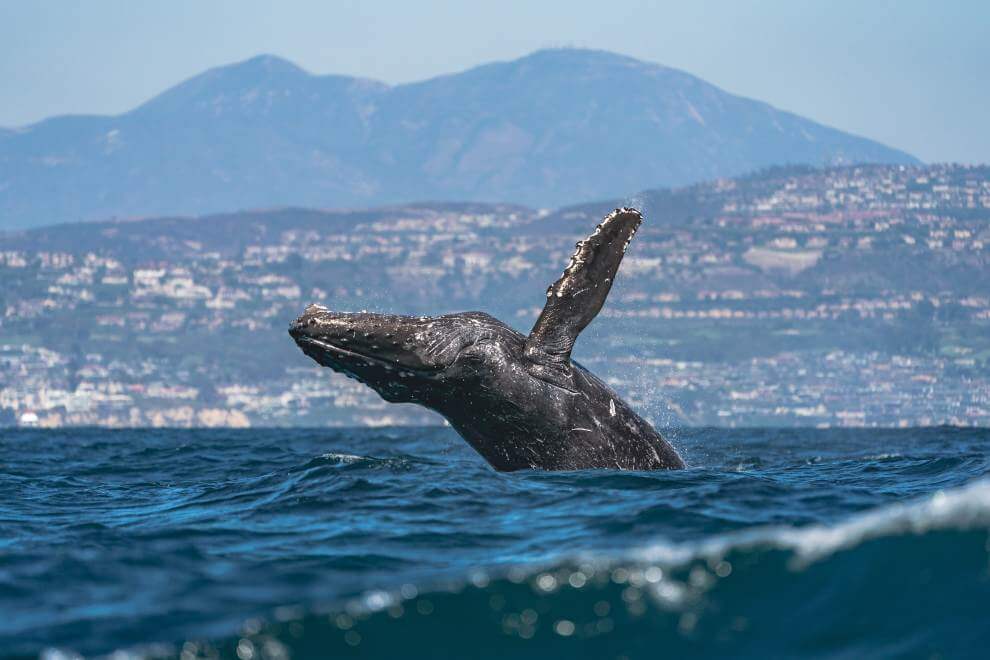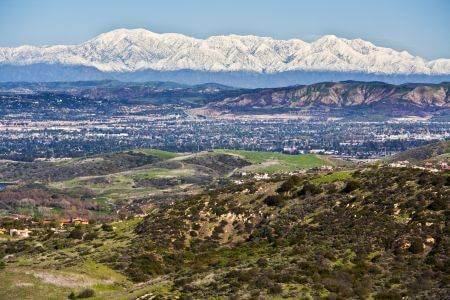Every year from December to May, visitors of Laguna Beach have the opportunity to witness thousands of gray whales as they pass through our coast’s pristine Marine Protected Area Reserve. This is the whale’s annual migration from their feeding grounds in Alaska, where they spend the summer months, to their breeding grounds in Mexico. They spend the wintertime mating, giving birth, and raising their calves in shallow lagoons before heading north to feed in the Bering and Chukchi Seas. Gray whales are champion migrators and undergo the longest migration of any mammal on Earth – their yearly journey equates to nearly 12,000 miles round trip.
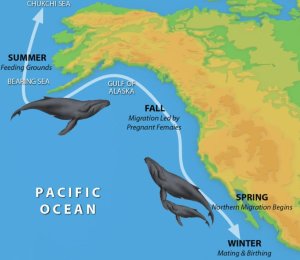
Fun Fact:
A gray whale could swim from here to the moon and back two and a half times in one lifetime!
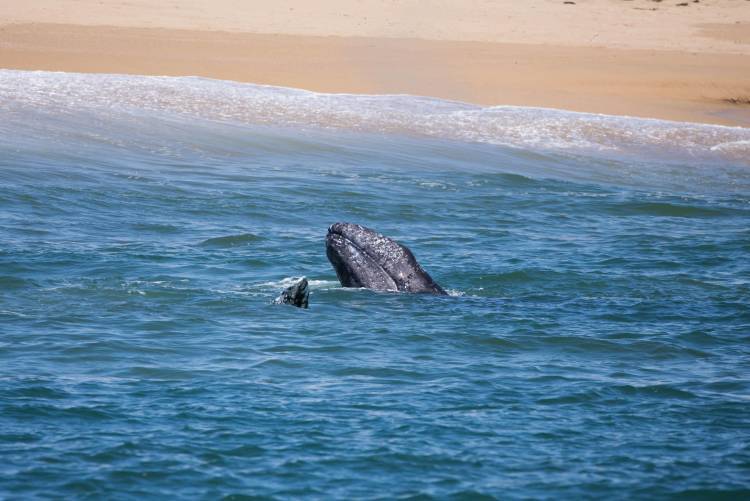
About gray whales
Adult gray whales reach lengths between 40-50 feet long, about the size of a school bus. They are identified by their mottled gray and white coloration, their lack of a dorsal fin, and their heart shaped spout. They are a slow-moving species and can acquire hundreds of pounds of hitchhikers like barnacles and whale lice! Gray whales are coastal swimmers and can often be found just off the beach – sometimes in less than 10 feet of water! Lucky beachgoers sometimes get to witness gray whales rolling around in the sand or spy hopping, which is when they bring their heads up out of the water to take a look around.
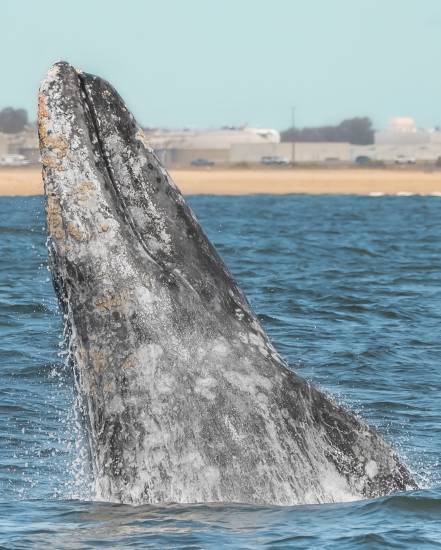
How do gray whales navigate
It is thought that gray whales use the land as their navigation route for their incredibly long migration and the shallow water provides protection for their young calves. Belonging to a category called “baleen whales,” gray whales lack teeth. Instead, they have plates made of keratin (same as our fingernails and hair) that hang from their upper jaw and resemble bristles on the end of a broom. Baleen plates are used for filtering out small creatures from the muddy sea floor, such as crustaceans, shrimp, worms, and amphipods.
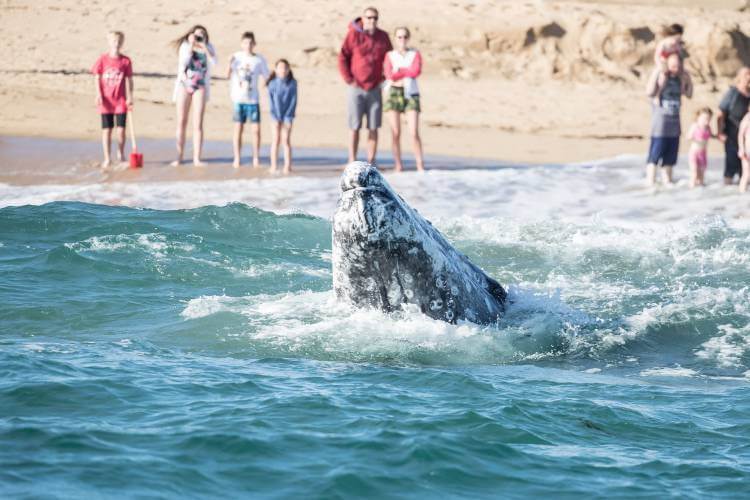
Back from the brink of extinction
Gray whales were hunted to the brink of extinction throughout the 1800s and early 1900s for their blubber, which was boiled down for oil and used in lamps and streetlights. Because of their close proximity to shore, gray whales were an easy target for whalers. Since the International Whaling Commission placed a ban on whaling in 1986, gray whale populations have rebounded in an incredible display of resiliency. In 1994, Gray whales were removed from the Endangered Species List and they are now considered a healthy stock with nearly 20,000 whales found along on the eastern Pacific coastline.
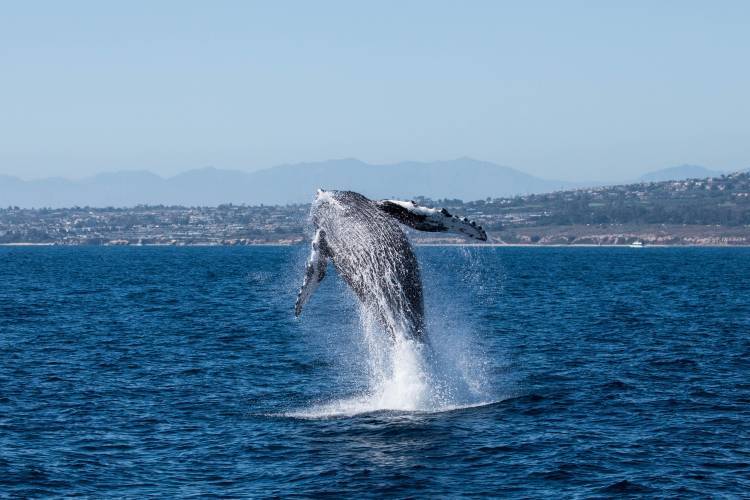
When to see gray whales in Laguna Beach
Southern California is one of the few places on earth to view whales year-round!
Both winter and spring provide the best chances to catch gray whales on their migration. But also throughout the summer and fall we have the opportunity to view charismatic humpback whales, giant blue whales, magnificent fin whales, three species of dolphins, sea lions, and more!
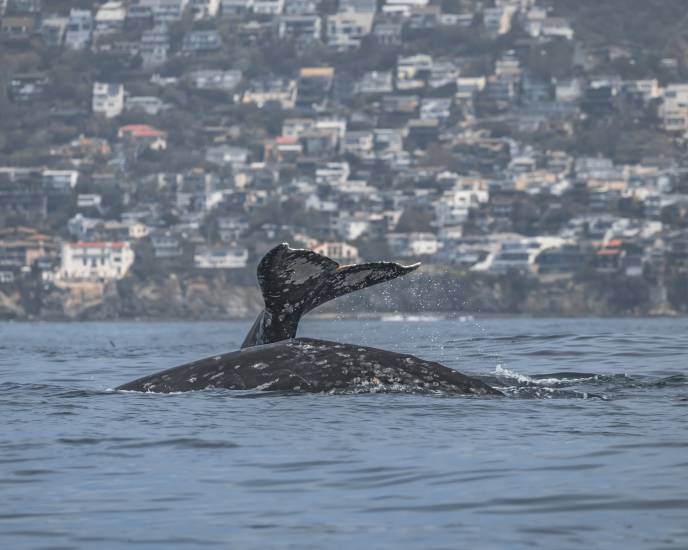
Sponsored by Newport Whales, visit newportwhales.com to book whale watching tickets and for more information about ocean life and conservation in Southern California.

